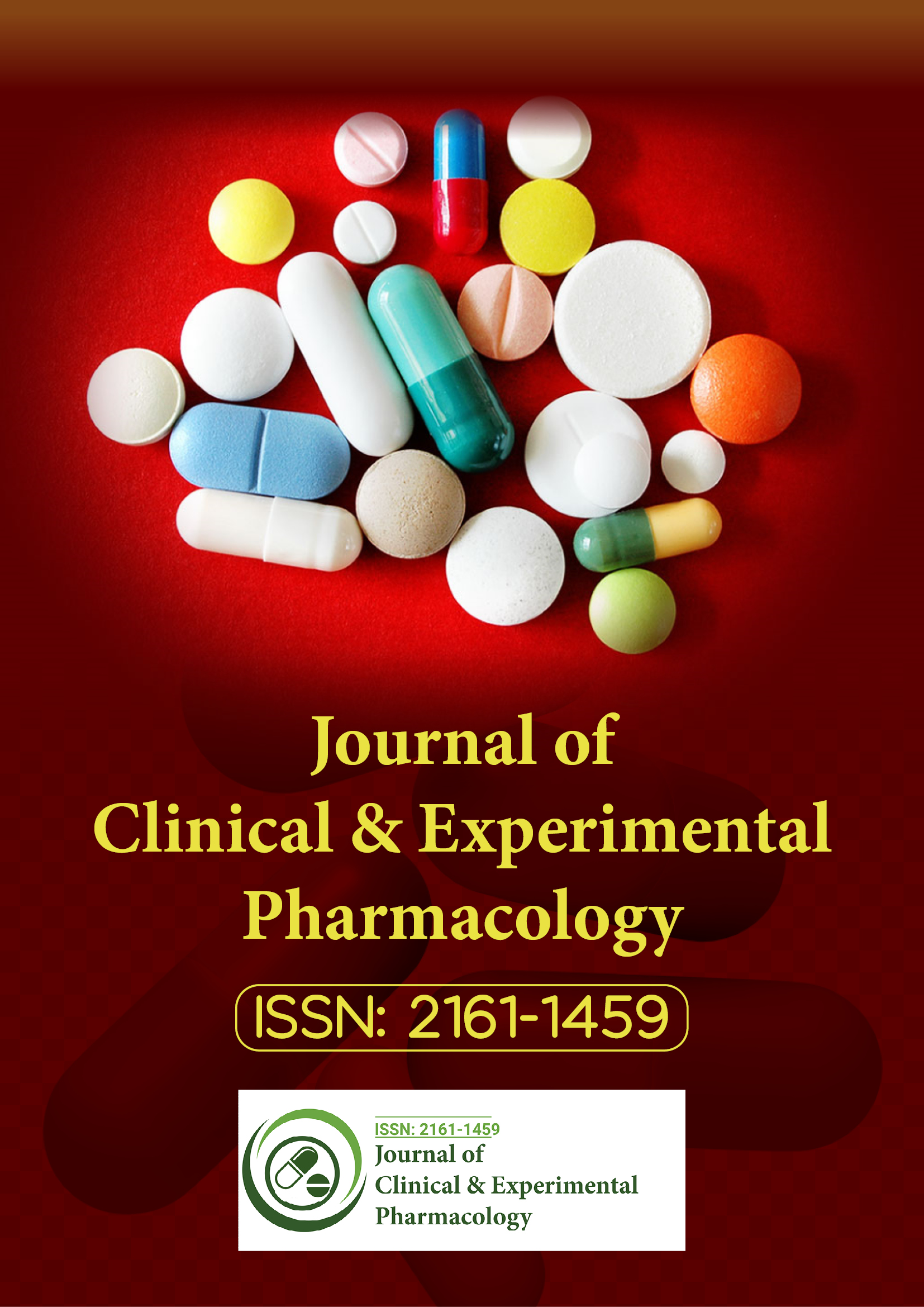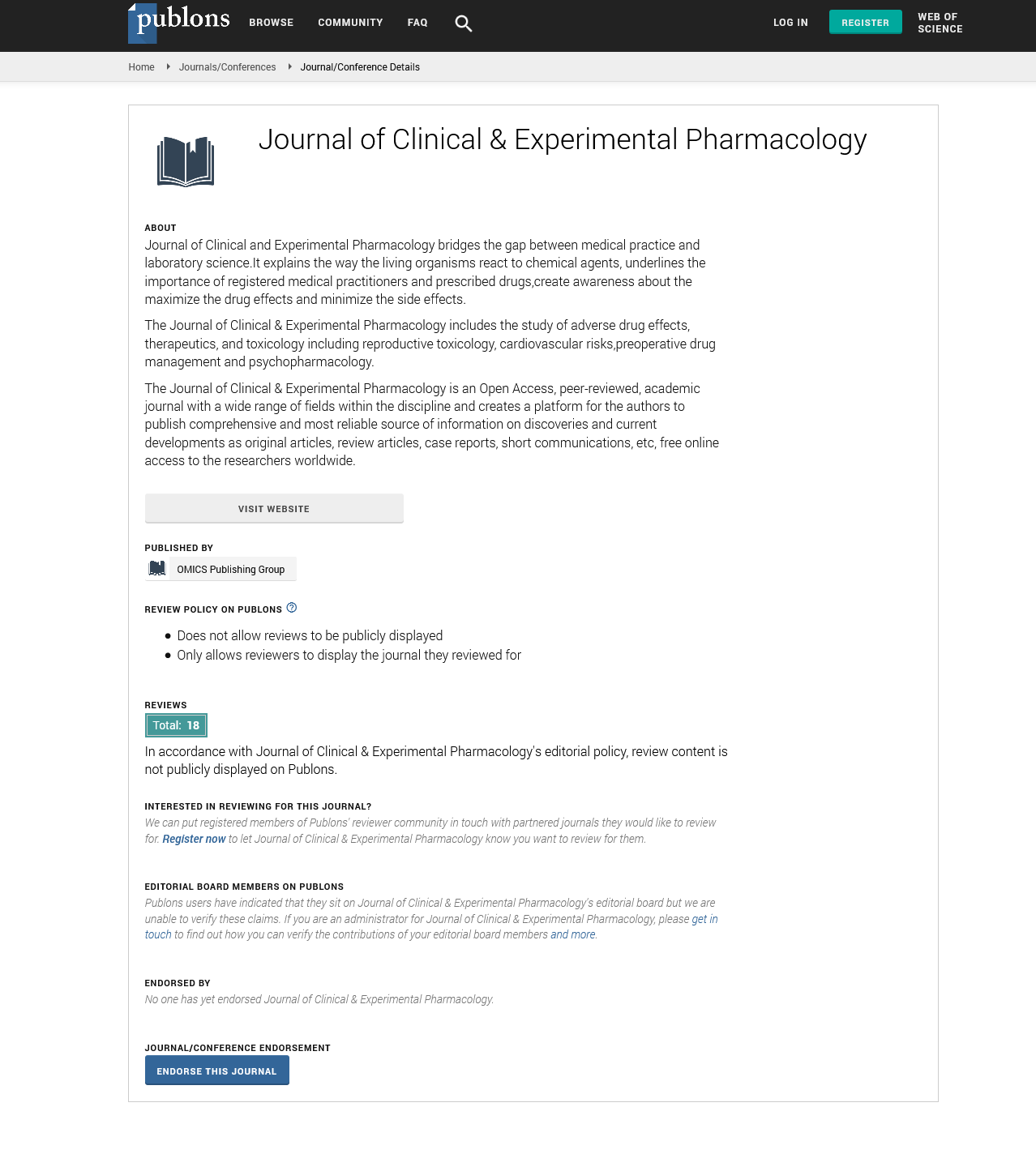Indexed In
- Open J Gate
- Genamics JournalSeek
- China National Knowledge Infrastructure (CNKI)
- Ulrich's Periodicals Directory
- RefSeek
- Hamdard University
- EBSCO A-Z
- OCLC- WorldCat
- Publons
- Google Scholar
Useful Links
Share This Page
Journal Flyer

Open Access Journals
- Agri and Aquaculture
- Biochemistry
- Bioinformatics & Systems Biology
- Business & Management
- Chemistry
- Clinical Sciences
- Engineering
- Food & Nutrition
- General Science
- Genetics & Molecular Biology
- Immunology & Microbiology
- Medical Sciences
- Neuroscience & Psychology
- Nursing & Health Care
- Pharmaceutical Sciences
Treatment with nerve graft and acidic fibroblast growth factor enhance neuron survival and functional recovery in cervical root injury
World Congress on Pharmacology
July 20-22, 2015 Brisbane, Australia
Ming-Chao Huang
Scientific Tracks Abstracts: Clin Exp Pharmacol
Abstract:
Neurotrophic factors are crucial for neuron survival and axon regeneration. Among them, acidic fibroblast growth factor (aFGF) is a normal constituent of the spinal cord and is expressed in motor neurons and primary sensory neurons. It is involved in repairing process after tissue damage. Our studies demonstrate that aFGF has beneficial effects in the treatment of cervical root injury, which is currently considered by most to be beyond surgical repair and medical treatment. In the last decade, we developed a repair technique by bridging severed nerve roots and the spinal cord with autologous nerve graft and adding aFGF mixed in fibrin glue. The fibrin glue not only acts as tissue glue but also ensures slow-release of the aFGF. We achieved functional recovery in animal experiments as well as in clinical trial. In a series of animal experiments, the outcome of both motor and sensory function was markedly improved. The improvement was related to the increase of both motor and sensory neuron survival, even in the worst clinical scenario, such as repairing in a chronic stage, or repairing ventral root only. In clinical trial, significant functional recoveries were also observed, including muscle power and mechanical sensation. We believe that besides surgery, the addition of aFGF may play an important role not only in enhancing axonal regeneration but also in promoting neuronal survival; which are the key factors for functional recovery.
Biography :
Ming-Chao Huang graduated from Taipei Medical University in 1984 and received PhD in Tokyo Women?s Medical University in 1997. His current position is a section Chief in the Neurological Institute of Taipei Veterans General Hospital and President of Taiwan Neurosurgical Society for Spine. He focuses on disease of spine, peripheral nerve, especially in brachial plexus injury, and brain tumor, both clinical and research. In brain tumor, he studies the effect and mechanism of anti-angiogenesis therapy. He also achieved success in the treatment of brachial plexus injury and is now investigating its pain mechanism.

